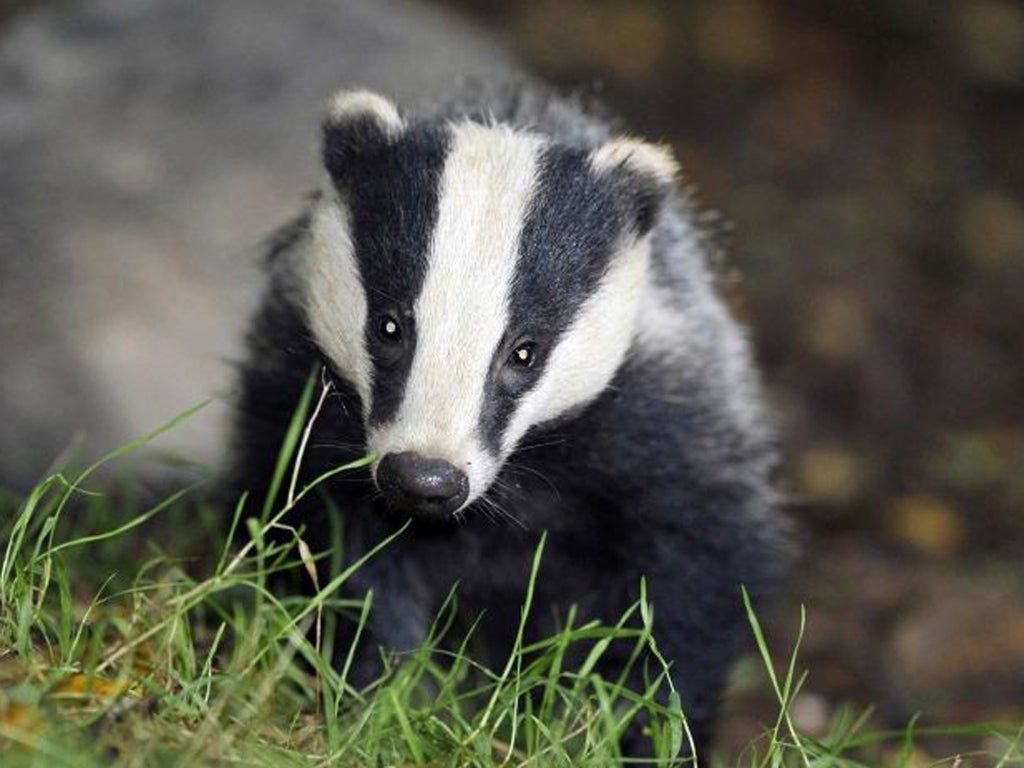Cull saboteurs: 'We will put ourselves between the bullets and the badgers'
Sarah Morrison delves inside the secret world of the people trying to stop the mass shootings

Lynn, a 46-year-old midwife, finds a novel way to fill her days off. The one-time hunter is now a hunt saboteur who finds herself at the centre of the Government’s controversial badger cull. She splits her time between maternity wards and patrolling country estates of Worcestershire.
She is just one of an estimated 700 saboteurs who are fighting the plan to use licensed marksmen to shoot around 5,000 badgers in two pilot cull zones in Gloucestershire and Somerset. Around 500 of them are prepared to trespass on property to disrupt the cull. “Obviously at night we’ll be finding the marksmen and putting ourselves between the bullets and the badgers,” Lynn told The Independent.
The badger cull row tearing up the countryside shows no sign of dissipating. While ministers argue that a cull is necessary to curb the spread of tuberculosis in cattle; critics argue that the cull is unethical or scientifically and economically flawed.
The coalition of opponents might be diverse – it includes Queen guitarist Brian May, TV presenter David Attenborough, and some prominent scientists – but it is the hunt saboteurs who stand accused of directing a “reign of terror” on farmers.
But Lynn believes they have been unfairly smeared. “The typical stereotypical image of the hunt sab is someone dressed head-to-toe in black, someone who doesn’t work, a 20-something-year-old male, but that’s absolute nonsense. The farming industry makes us out to be terrorists, or all evil people, but we’re individuals,” she said.
Lynn, who has a number of animal rights convictions for her involvement in anti-hunting and anti-vivisection campaigns, founded the group 3 Counties Hunt Saboteurs, last year. She gave up hunting after she saw some “terrible things” done to foxes, deer, hares and mink. She said that “very committed” new people were joining the “sabs”, or saboteurs, and scouring the fields straight from work.
“We’re seeing doctors, teachers, all sorts of people,” said Lynn, who can spend up to 50 hours a week checking badger setts, organising volunteers, or doing outreach. She also works as a midwife on a shift basis at a local hospital, usually at night. “I’m actually quite open about things,” she said. “Some of my colleagues do know, just as I am aware of what they do out of work.”
Detective Chief Superintendent Adrian Tudway, national co-ordinator for domestic extremism at the Association of Chief Police Officers, told the Department for Environment, Food and Rural Affairs (Defra) last year that clashes between protesters and cullers could pose “clear potential harm to public safety”. He added that there was “some potential for unlawful direct action, disorder and criminality” if the cull went ahead.
This week it emerged that officers policing the culls have carried out “wargames” with animal rights activists and cullers to simulate confrontations that might occur. Inspector Mark Ravenscroft of Gloucestershire Police said enforcing the cull remained a “big concern.” He stressed that the force will “allow people to bend the law to protest peacefully” by allowing a short protest on a highway, for example, to stop a group blocking the road all day.
But Elaine, a 49-year-old social care worker, who has volunteered as a hunting sab for over 25 years, said saboteurs “were not aggressors”. The Herefordshire-born activist treads a thin line between horse-owning country enthusiast and animal-rights crusader.
“I ride, I have my own horses, and I have drag hunted, but I was brought up to love and respect animals,” she said. “I don’t feel the need to go out in a balaclava. Work knows what I’m like and they don’t mind.”
She denied sabs were using intimidating techniques and dismissed claims that by trespassing, she could be breaching the law. “Whatever [the cull] is doing is 100 times worse that what I’m doing. When it comes to saving lives, if I have to tread off a footpath to do it, it’s worth it,” she said.
Michael, who is in his late sixties and has seven grandchildren, wants to help stop the cull. The retired builder lives in Cirencester, Gloucestershire, and has been involved in animal rights for 50 years. The former trustee of a wildlife rescue centre said: “This unscientific experiment they’re doing is wrong. I’ll help as much as I can; [the grandchildren] are right behind me. I spend four out of five days a week surveying and mapping sites, and checking setts aren’t baited. We’ve definitely got public support.”
A Defra spokesperson said: “People have a right to protest but this must be carried out within the law. The pilot culls are a legal and lawful activity and it is wholly unacceptable that those involved should be subject to intimidation or be a target for criminal activity.”
Subscribe to Independent Premium to bookmark this article
Want to bookmark your favourite articles and stories to read or reference later? Start your Independent Premium subscription today.

Join our commenting forum
Join thought-provoking conversations, follow other Independent readers and see their replies